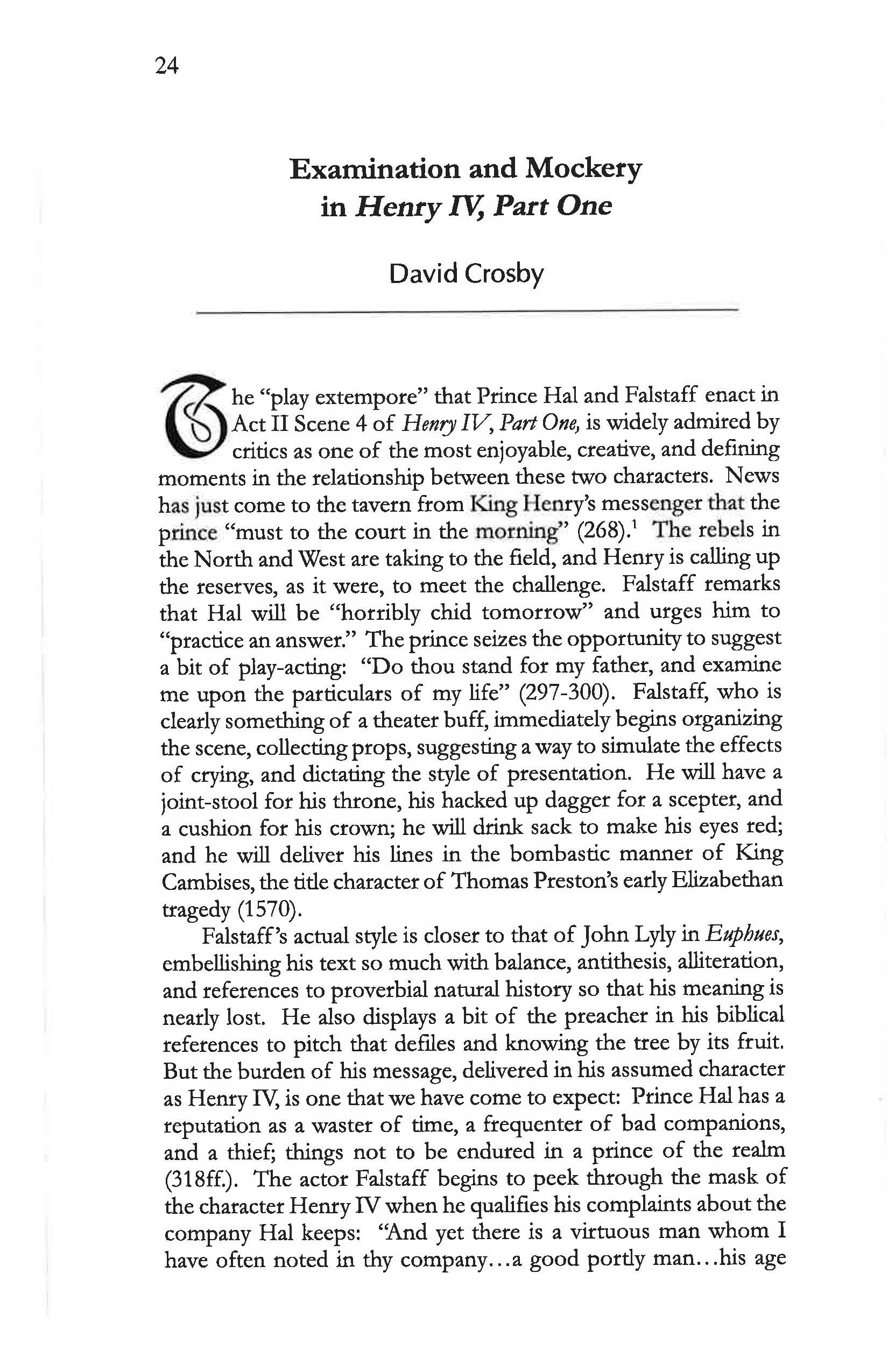Examination and Mockery in Henry IV, Part One
Main Article Content
Abstract
The “play extempore” that Prince Hal and Falstaff enact in Act II Scene 4 of Henry IV, Part One is widely admired by critics as one of the most enjoyable, creative, and defining moments in the relationship between these two characters. News has just come to the tavern from King Henry’s messenger that the prince “must to the court in the morning” (268).1 The rebels in the North and West are taking to the field, and Henry is calling up the reserves, as it were, to meet the challenge. Falstaff remarks that Hal will be “horribly chid tomorrow” and urges him to “practice an answer.” The prince seizes the opportunity to suggest a bit of play-acting: “Do thou stand for my father, and examine me upon the particulars of my life” (297-300). Falstaff, who is clearly something of a theater buff, immediately begins organizing the scene, collecting props, suggesting a way to simulate the effects of crying, and dictating the style of presentation. He will have a joint-stool for his throne, his hacked up dagger for a scepter, and a cushion for his crown; he will drink sack to make his eyes red; and he will deliver his lines in the bombastic manner of King Cambises, the title character of Thomas Preston’s early Elizabethan tragedy (1570).
